Lecce, led by Marco Baroni, defeated Atalanta thanks to the team’s ability to effectively defend against attacks. To Gian Piero Gasperini’s astonishment, Lecce was able to silence the home crowd.
Atalanta have been competing for a berth in the UEFA Champions League by presently appearing in the Europa League. Despite being three points behind Jose Mourinho‘s Roma, Gasperini’s team are still holding on to hope. Juventus had 15 points deducted for financial issues and are now nearly nine points behind Atalanta.
Lecce’s recent success against the league’s best teams—they’ve beaten Lazio, drawn with Milan, and now beaten Atalanta twice in a row—is a league first since the 1993–1994 season. The Giallorossi are determined to finish in the top half of the league in what has been a spectacular season thus far.
In this tactical analysis, we’ll examine Atalanta’s offensive woes, not just from this game but also their recent matches to see if we can draw any conclusions that will help them improve their attack. Atalanta’s offensive tactics under Gasperini’s guidance will also be dissected here.
Lineups
Gasperini resorted to his tried-and-tested 3-4-1-2 formation, which he has used in over 43% of the games this season. With a three-man defence in front of him, Juan Musso got the nod to start in goal. On Merih Demiral’s left and right stood Berat Djimsiti and Rafael Tolói, respectively.
Teun Koopmeiners and Éderson José formed the centre of midfield, while Joakim Maehle and Davide Zappacosta patrolled the wings. Jeremie Boga, formerly of Sassuolo, began in the middle of the field as an offensive midfielder, with Ademola Lookman and Rasmus Højlund playing up front.
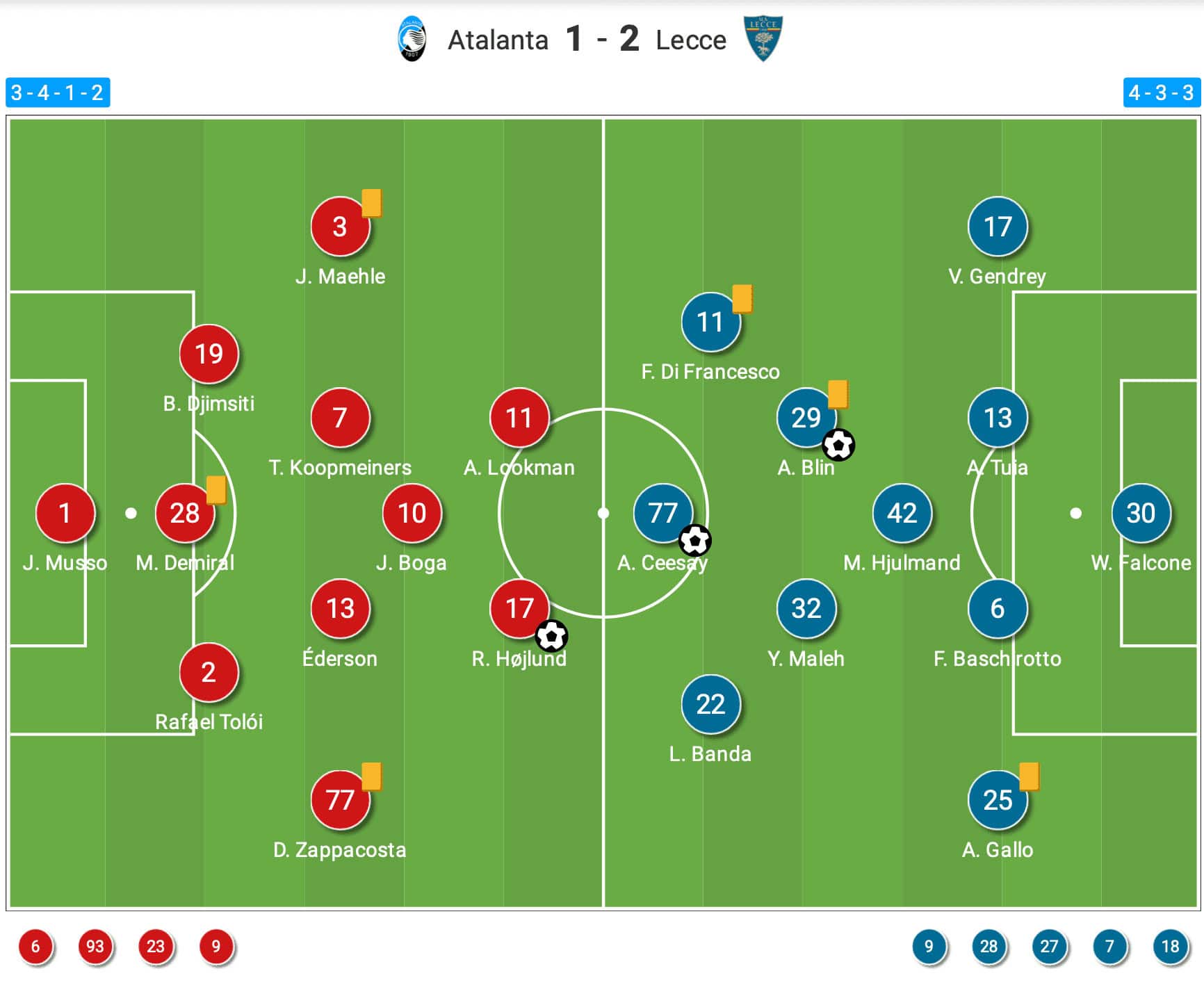
Baroni opted for his go-to 4-3-3 formation, which he has used about 40% of the time this year. In goal, Wladimiro Falcone got the start, while Alessandro Tuia and Federico Baschirotto were the starting centre-back pairing. Left and right back were Antonino Gallo and Valentin Gendrey.
With Youssef Maleh and Alexis Blin positioned directly above him, Morten Hjulmand was tasked with playing the role of a single pivot. Assan Ceesay was the lone striker in the starting lineup, with Lameck Banda and Federico Di Francesco on the wings.
Why key passes are crucial for positional attacks
Lecce profited significantly from the pushing and recovery efforts, and all made significant contributions. The press caught Atalanta off guard, and they struggled to maintain control of the game.
By being careless and sluggish, Atalanta came dangerously close to being in trouble. To create room for the offensive midfielder Boga to slide in, Éderson moved down between Demiral and Tolói. Éderson almost gifted a goal to Lecce when he failed to complete a pass at the same moment the picture below was frozen.
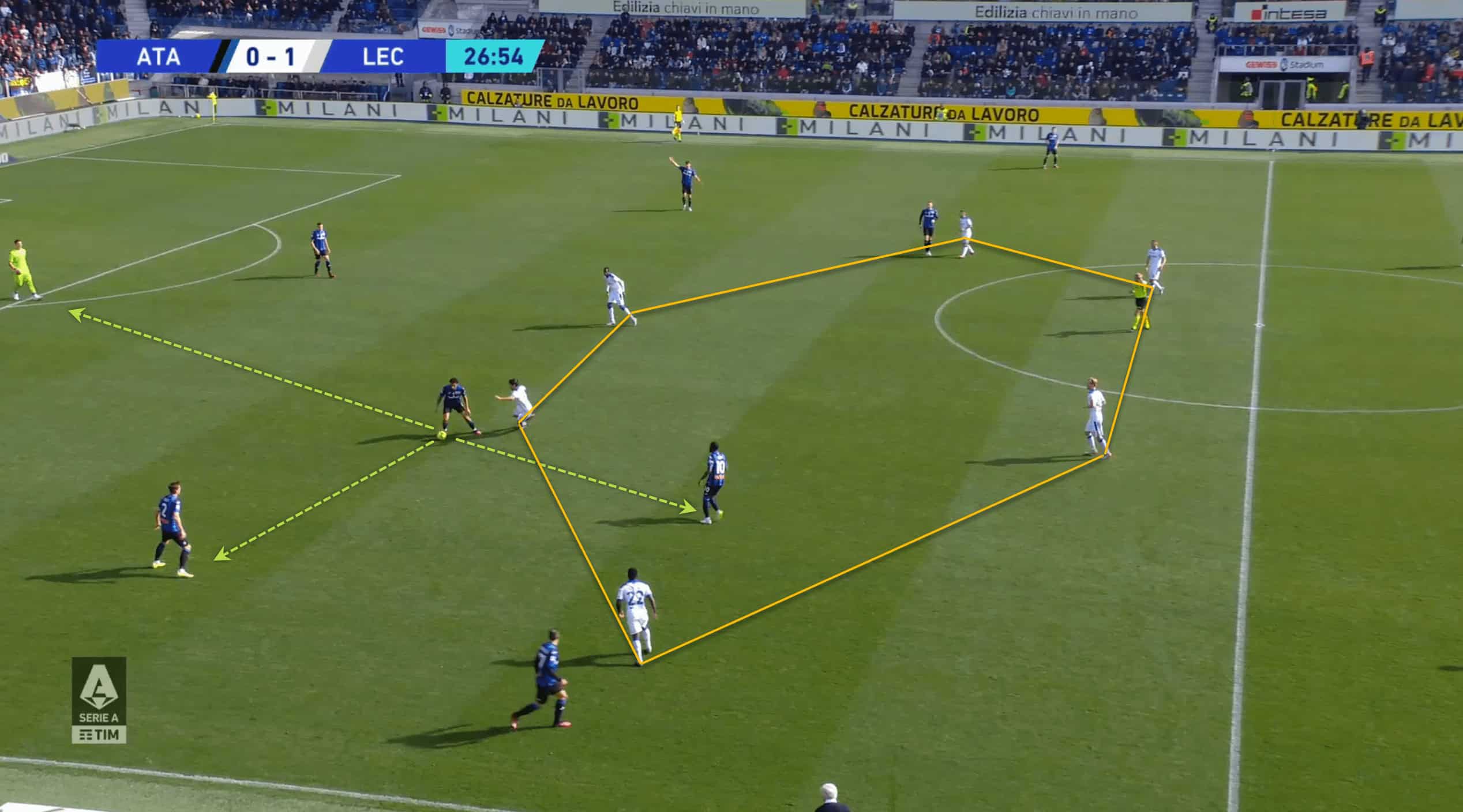
The infrequent strikes from Lecce were significantly more dangerous than the common ones from Atalanta. Just 13 out of 51 such attacks resulted in a shot being recorded. Just one of Lecce’s 19 positioning attacks resulted in a shot on goal.
While they had a match tempo of 17.26, Atalanta was unable to break through. Lecce is maintaining a low profile, with just 13.13 registered thus far.
Most of the time, the defensive midfielder is completely invisible as the third central defender rides forward with the ball to discover passing options. The offensive midfielder would enter the game, assisting both sides.
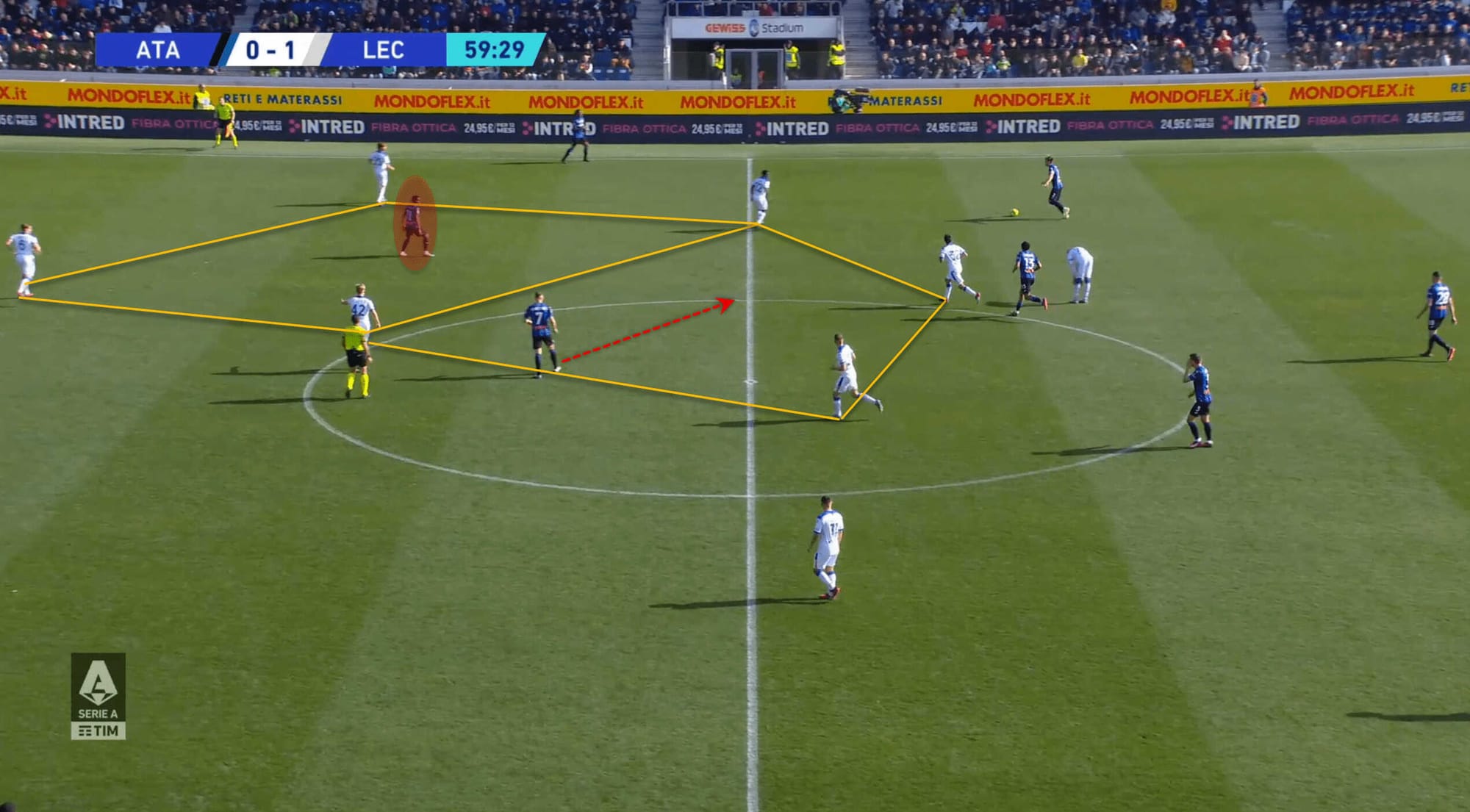
This time, it was Koopmeiners’ turn to be the one in peril. While he is in a prime position to help out his teammate as a defensive midfielder, he fails to do so because he fails to recognise the opening.
Moving inside the structure’s core might strengthen the approaching build-up while also attracting other players and freeing up additional room.
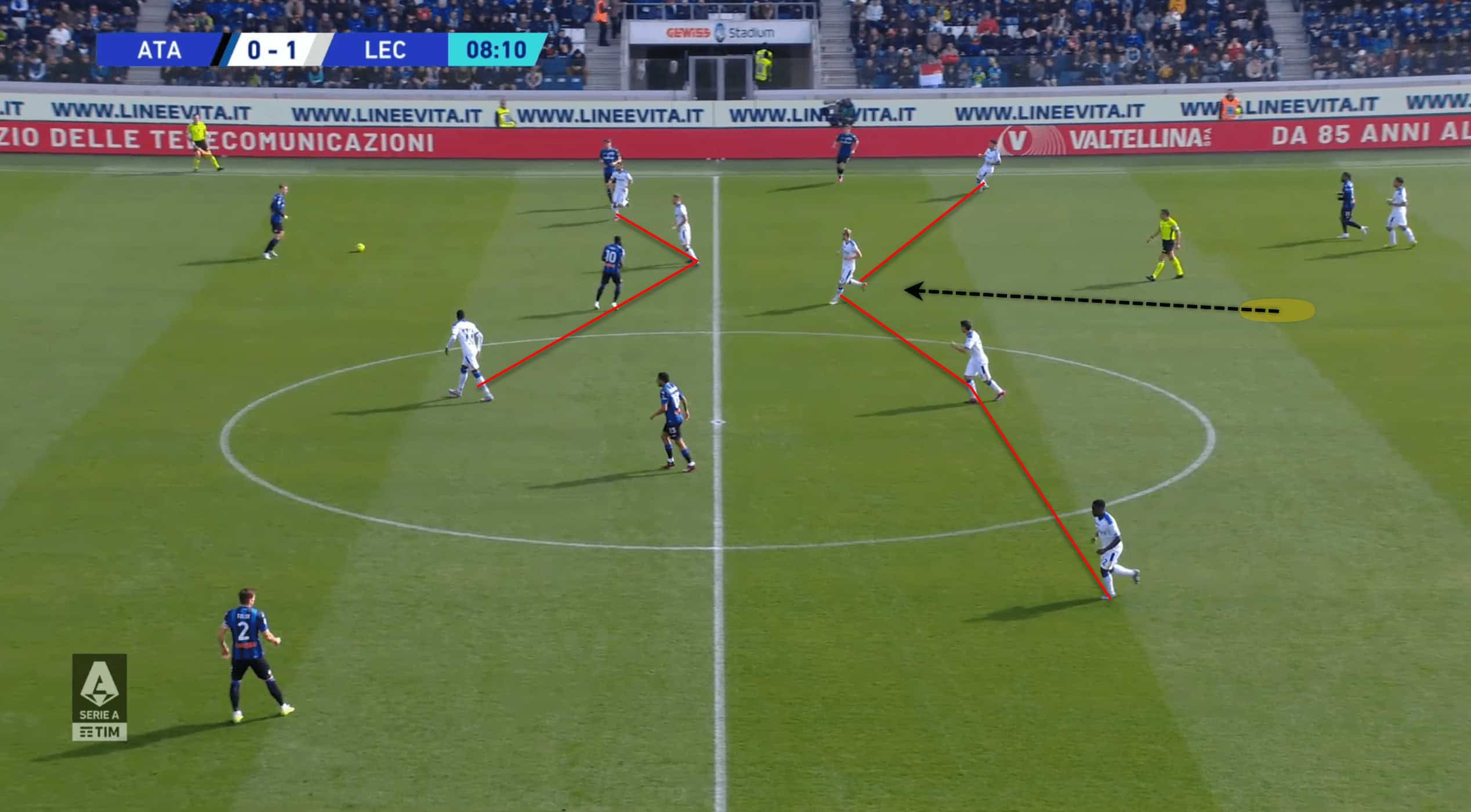
Lecce’s press seemed to have advanced as Atalanta was plotting their attack. Hjulmand makes a dramatic upward manoeuvre to make the structure even more compact so that he may push harder.
Suddenly, the press transforms into a 3-4-3 formation, providing both breadth and compactness in response to any opposition movement. Subtle though it may seem, Baroni’s new configuration is designed to choke Atalanta out of its subconscious.
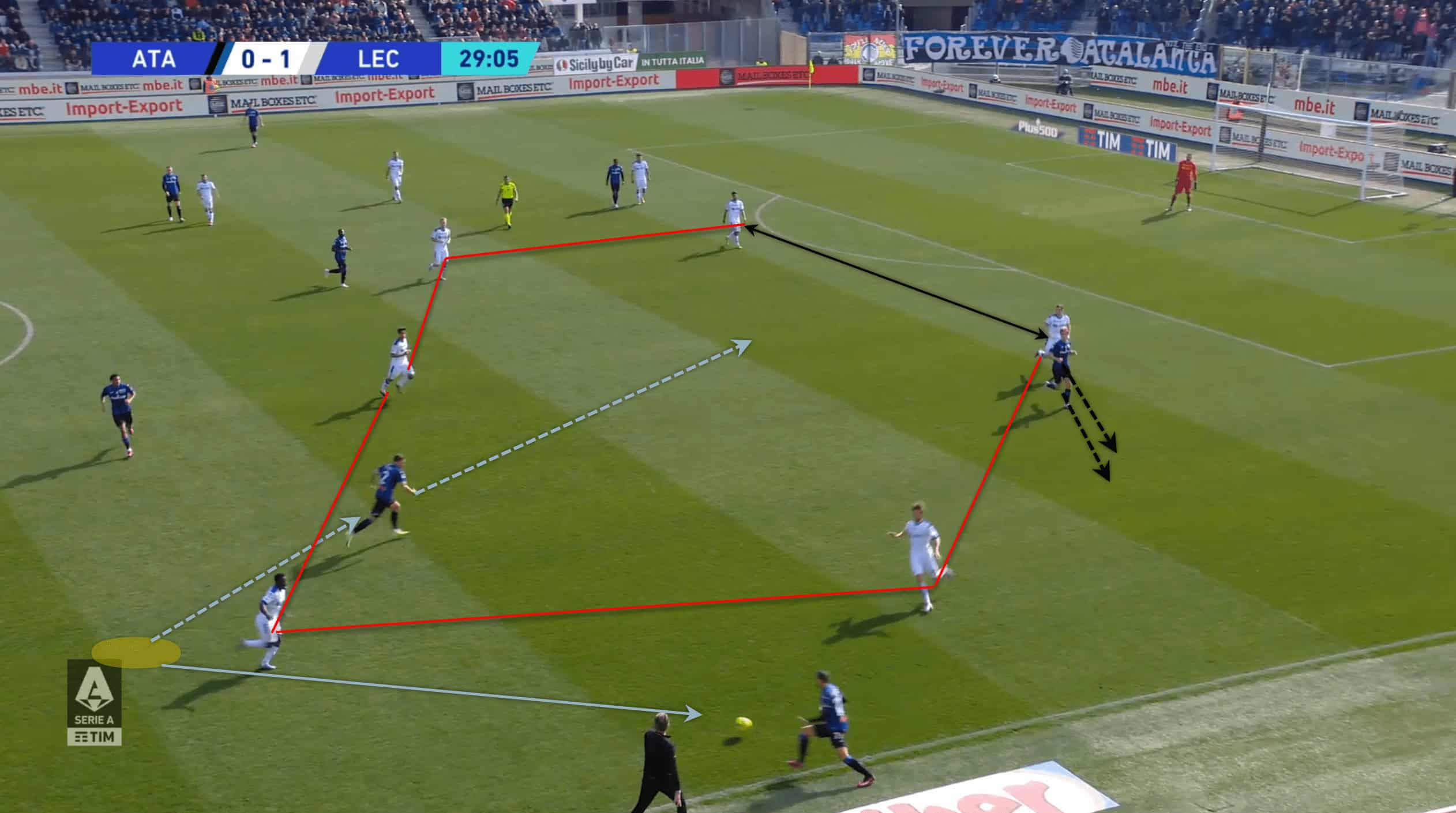
Just beyond the half-hour mark, Atalanta failed to send the ball to the in-motion Tolói. Zappacosta misreads the situation and misses the passing lane when Lecce’s midfield is split in half. It’s possible to see Zappacosta’s supporter Højlund who is dragging one of the centre-backs but he opts to resume the passing exercise instead.
How decision-making proved to be the lacking factor
The difference between the two teams was huge, with Atalanta’s xG coming in at 1.31 and Lecce’s being a paltry 0.39. Unfortunately for the home side, their positioning assaults were unable to break through Lecce’s tight defence.
Although suffering from ball loss, Baroni’s squad relied heavily on recoveries. The Lecce team lost the ball 117 times throughout the match, although they were able to retrieve it 97 times.
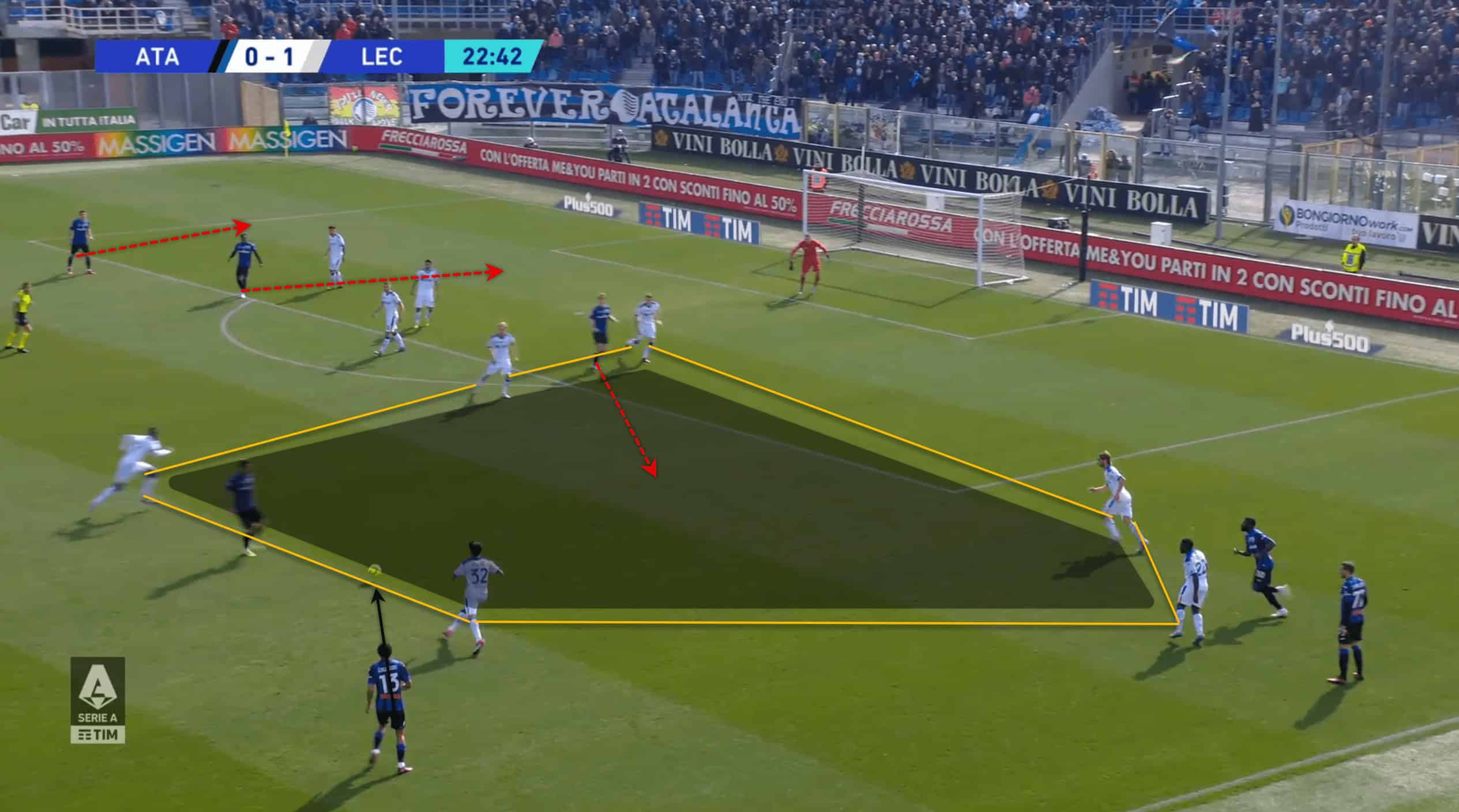
As we see above, the red-marked arrows indicate the space the players could have moved into. This would allow Lecce to track the movers and disrupt the shape thereby.
All the players do is wait patiently inside the box for a cross, showing no signs of moving. Coaches are responsible for influencing their players’ mindsets, and if they don’t conform, the players in question won’t be included in the starting lineup.
As compared to Atalanta’s, their 103 ball recoveries are much lower. The disparity in personnel strength between the two groups had a major impact.
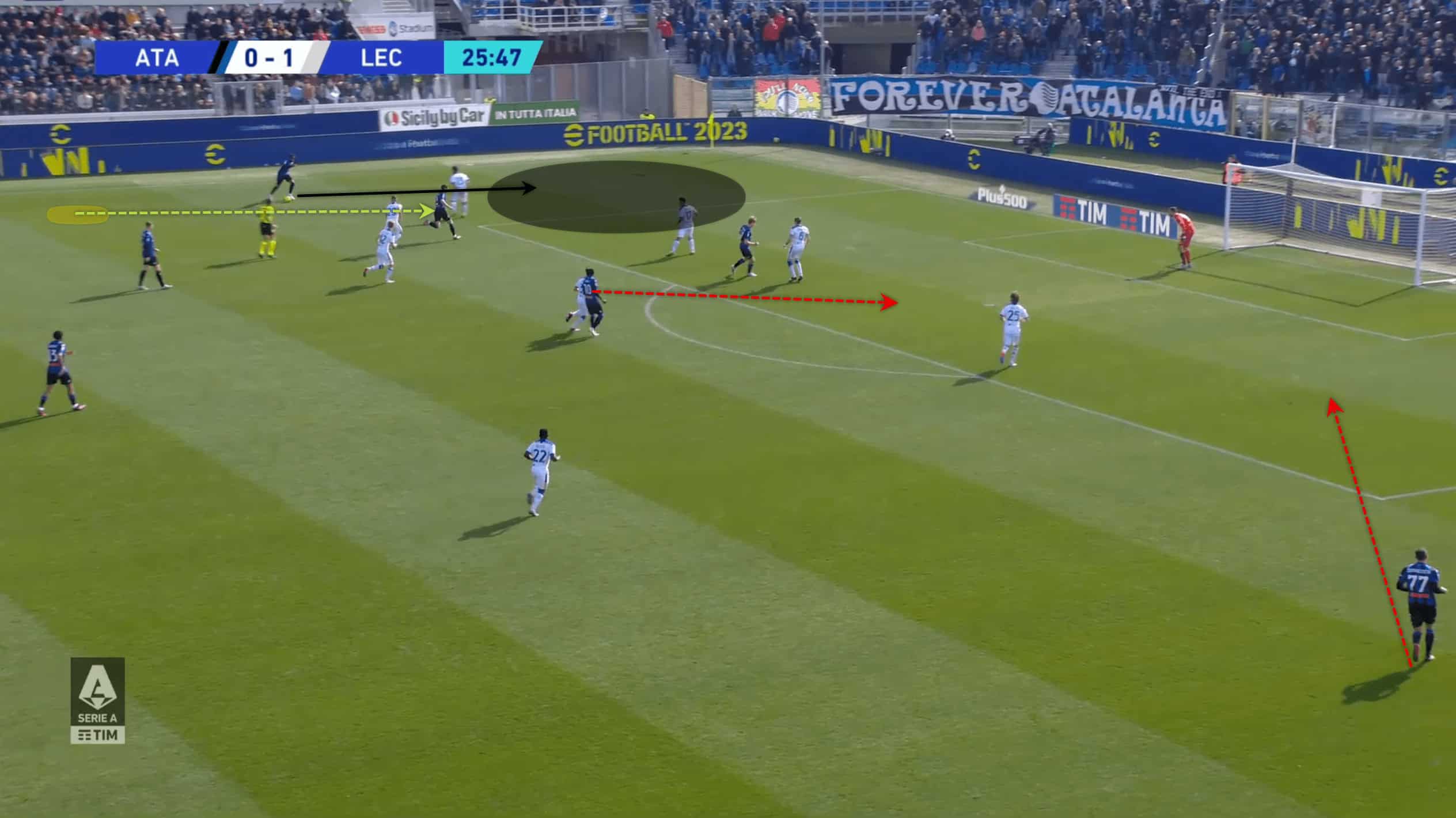
Here, you can see the left back underlapping trying to find an opening to cross the ball into the box. The offensive midfielder stays with his defender in the last seconds before the photo is taken, instead of venturing into the box.
On the far right, where nothing seems to occur, we see right back Gendrey standing alone. As a result of the players not doing their part, the situation deteriorated. The lack of involvement whenever needed has not been delivered by the players as they seem to be unaware of the situation.
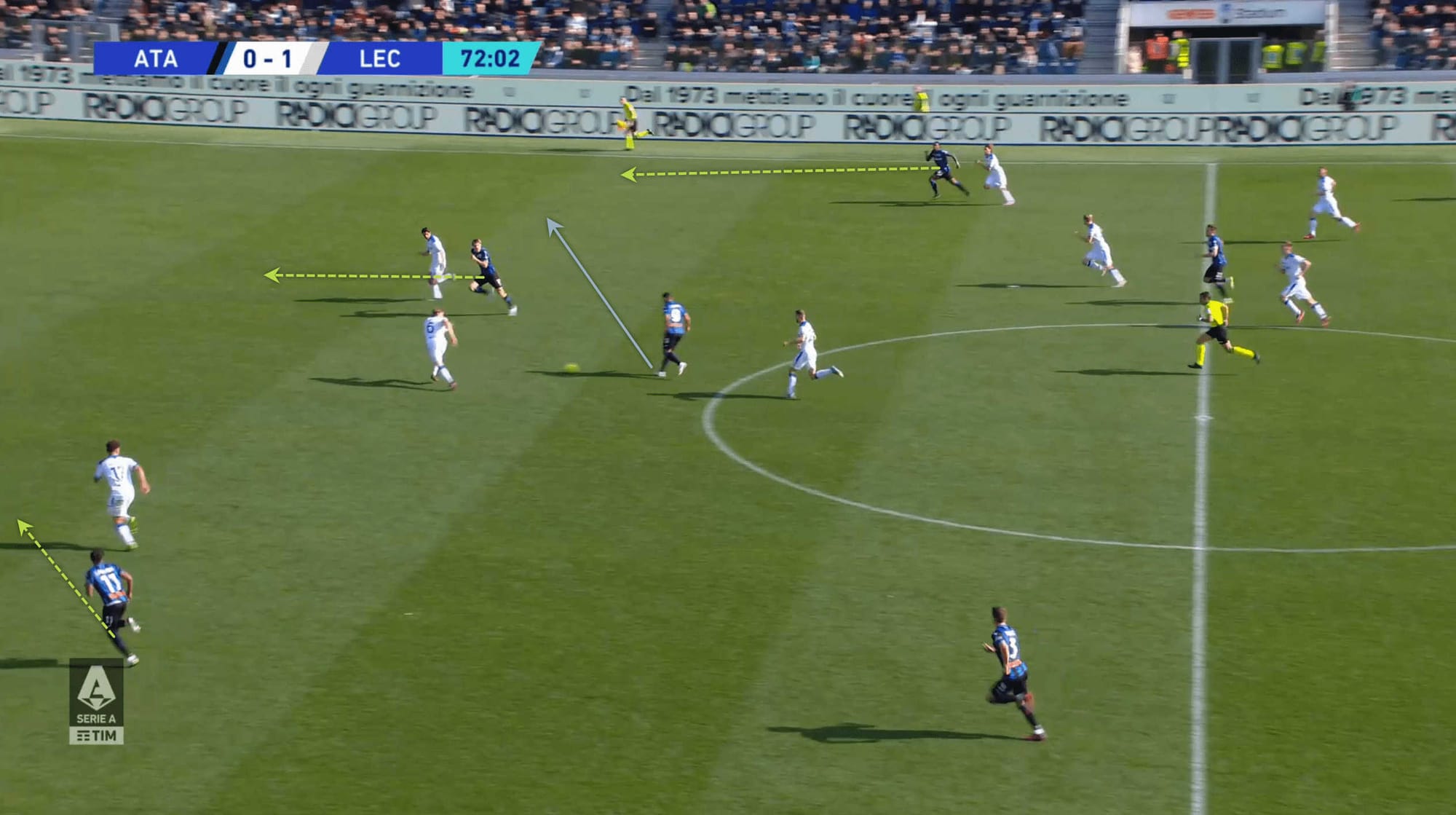
How Atalanta planned to approach may be inferred from the picture above. Atalanta’s ferocious attack sees a through ball with limited range but fails to account for the oncoming right back.
Despite their assigned positions, each Lecce player displayed active movement during the opening sequence photo. Because of this shared goal, players gradually began adopting Atalanta’s style of play.
When all of Lecce’s defence was broken, two of Atalanta’s players run past their markers in search of a lob-through. One of the centre-backs was laid the opportunity to make a lobbed pass over the heads of four men. But the confidence he put in his long passing and timing was merely nothing. He shies away from the situation to keep the ball rolling.
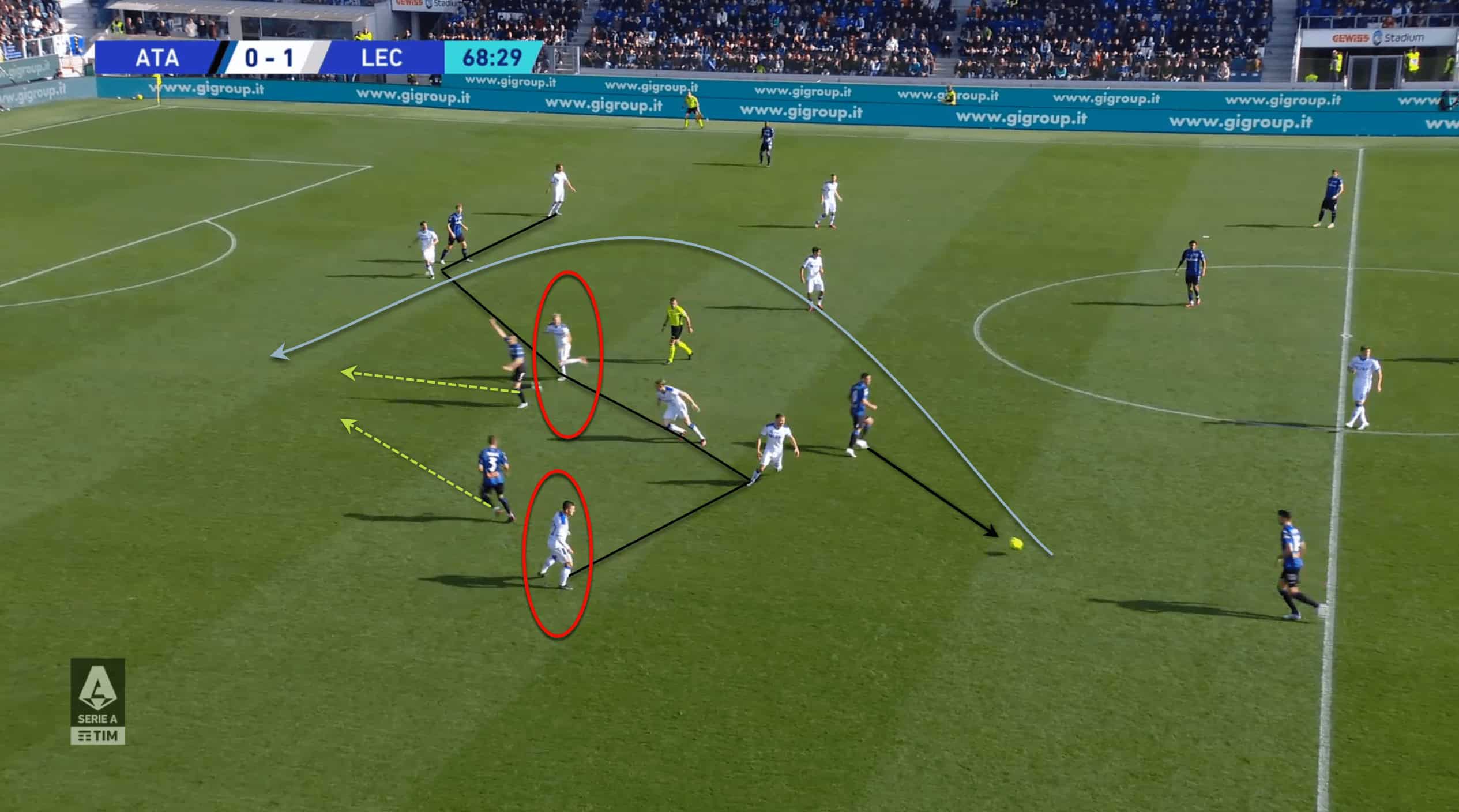
Despite Atalanta’s best efforts, Lecce’s low block held strong even after the whole team had recovered while the home team had ridden up.
The game was seen quite differently once Atalanta stopped moving. While losing, the home team could sit back and relax, but Lecce never stopped sprinting and working hard. With just half as many interceptions as Lecce, Atalanta were unable to score more than one goal against Lecce.
Atalanta’s similar struggles during earlier fixtures
Atalanta were unable to complete the dance without the addition of countermovements. The use of countermovements is well-known for pulling defenders out of position and has a significant impact on the opponent’s movements.
As can be seen in this clip from the Juventus game, Boga’s wide ball-holding stance helped buy time for his teammates while they searched for a better spot. While playing against Lecce, Boga opted for a more central and less wide position. Against Lecce, Boga’s skills with the ball and the way his tight control confuses the defence were never fully used.
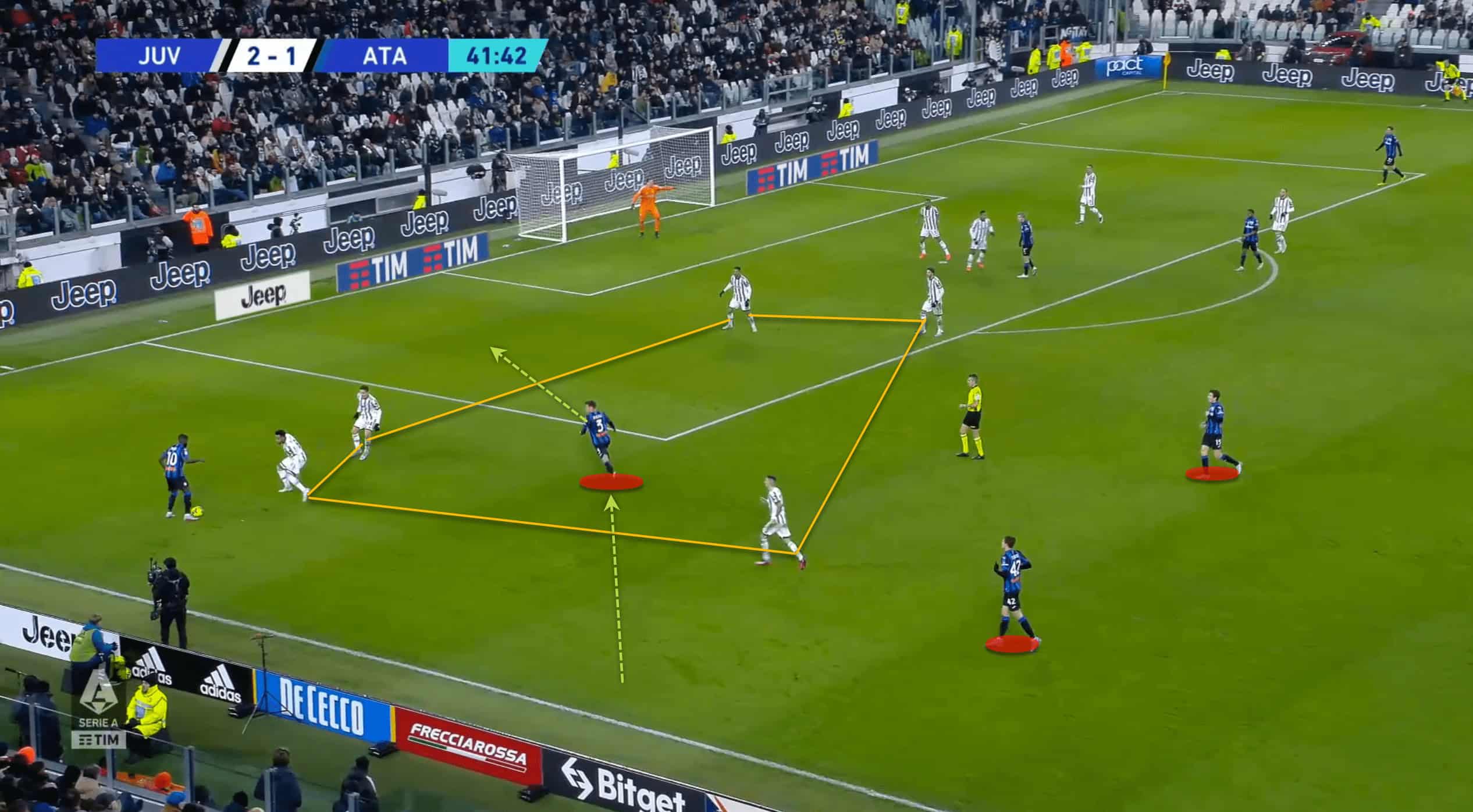
The top image shows the left back floating around to locate the ideal crossing position, while the midfielders behind Boga seem to like the extra room they have.
The offensive midfielder who drove up 40 yards from the back chooses the pass that stalls the attack as Alessio Dionisi’s Sassuolo are in transition.
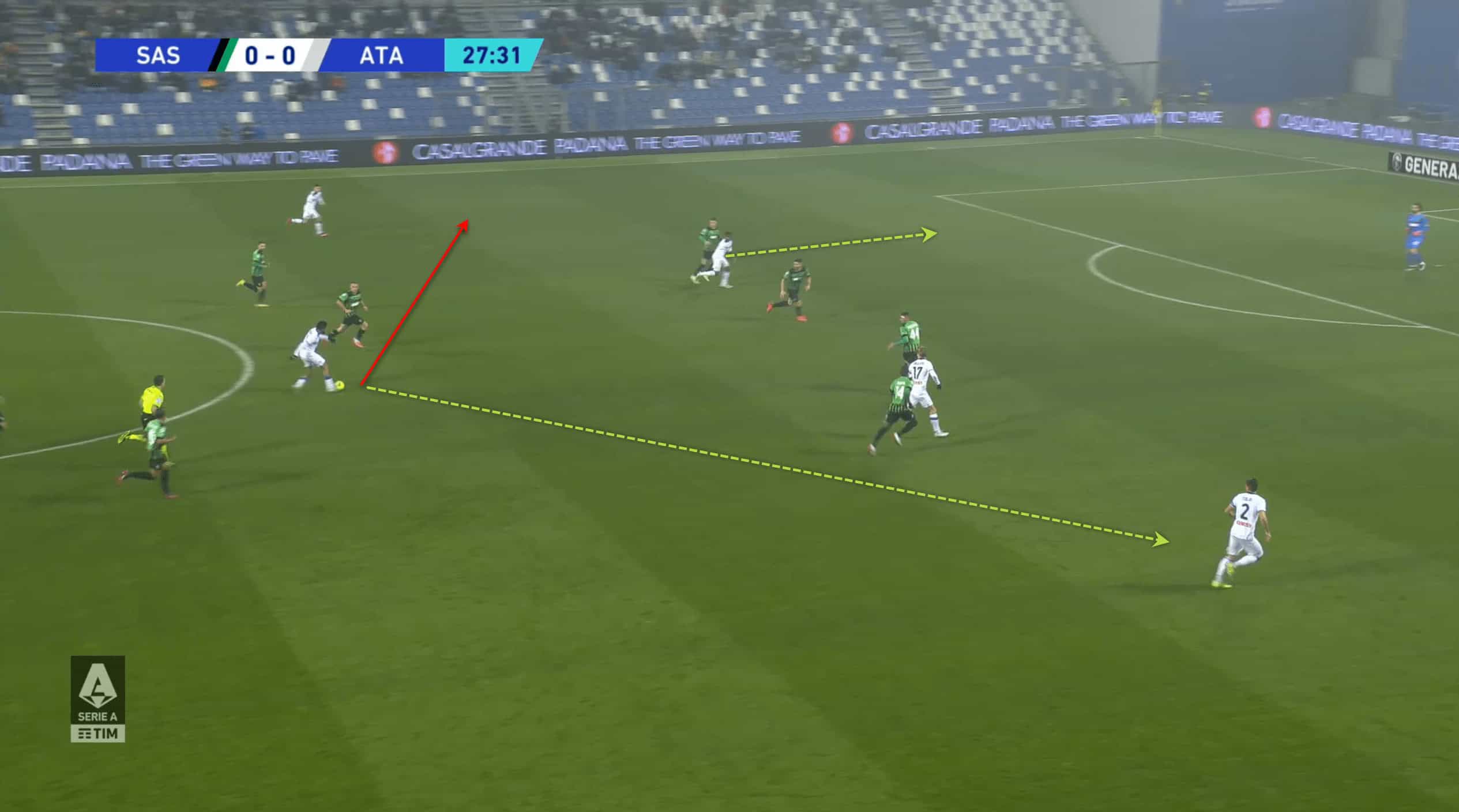
The right-back who is considered fully available is not used. If the ball was completed to the right back, the green forward would go to the offensive zone to attend the cross. If Baroni’s squad plays its cards well, the choices the players make in the final third might result in a slew of goals.
Once Atalanta had settled with the ball near Inter’s box throughout the tie, they hardly seemed to move to force the opposition to give up space.
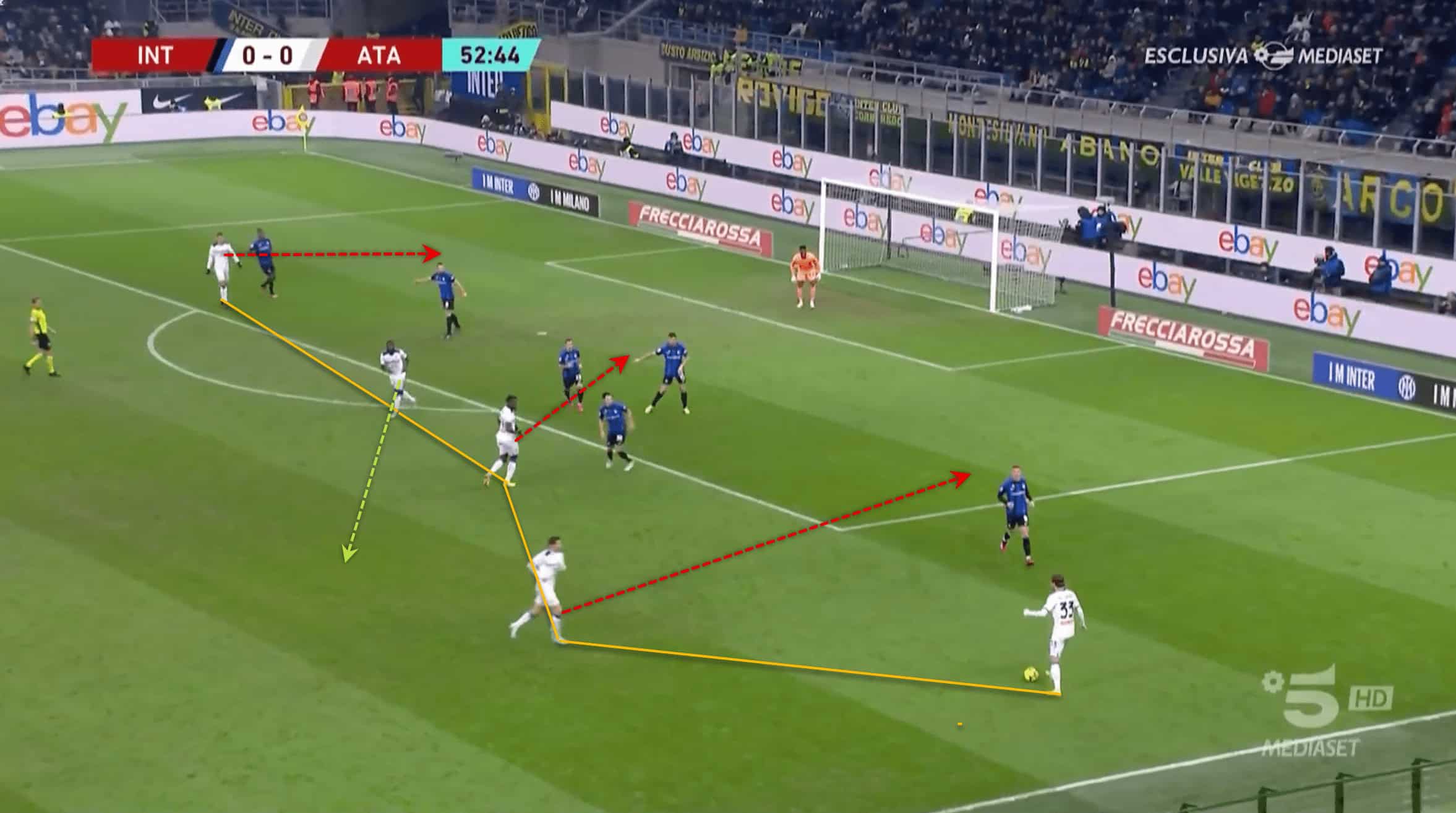
The fullback in position to make an underlap on the player with the ball is denying himself the opportunity for no good reason. Without a run to confuse the opponent, Inter’s full-back is left to face a one-on-one matchup. Zapata is seen leaving the area outside the box while the ball is in a crossing position when he should have already entered the box.

The previous match versus Lecce ended in a defeat by the score of 2-1. A single pass would have been disastrous for Lecce as Maehle made his fascinating run behind the defensive line.
This pass is too good to be missed, but Boga instead diverts it and throws it back. Neither the run made by his teammate nor the open area behind his opponent is visible to Koopmeiners, who is on the far right side.
The difficulties Atalanta had in their match against Lecce ring were vaguely familiar. The analysis explains why Gasperini has to concentrate more on offensive problems. All of these occurrences occurred in the past, and they continue to occur under his current management.
Conclusion
It didn’t take long for Lecce to feel at home at the Gewiss Stadium, and they immediately began exerting pressure. They were first surprised, but Atalanta eventually made their way into the building.
With Sunday’s 2-1 victory against Atalanta, Lecce took a major stride towards Serie A safety and dealt a blow to Atalanta’s chances of qualifying for the Champions League next season.
After a poor first half, Atalanta’s coach Gasperini was pleased to see his squad perform better after halftime. In the minutes after the resumption of play, Ademola Lookman believed he had tied the score, but the goal was disallowed for offside. However, in the 74th minute, Lecce extended their advantage when Strefezza took a short corner and sent the ball in for an unmarked Blin to head home.
Losing 2-1 at home to Lecce on Sunday hampered Atalanta’s chances of finishing in the top four of Serie A.





Comments